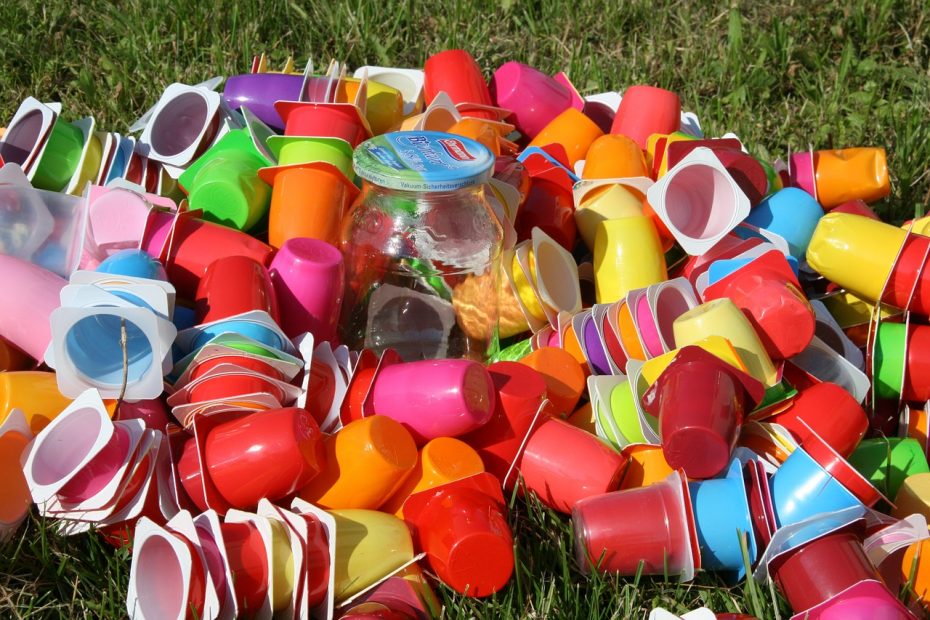Catherine’s blog for The Low Carbon Business Network hosted by the University of Derby
The spotlight is still on plastics: a recent petition asks supermarkets to stop using an estimated one billion plastic bags each year to package bananas.
The headlines highlight the high levels of wasted materials. For example, we use 38.5m plastic bottles every day in the UK, but we only recyle about half of them. In other words, we send over 16 million to landfill, incineration or just discard them: all of which pollutes our air, atmosphere, soil and water.
Businesses are using circular economy approaches to achieve solutions that are future-fit, sustainable and profitable. Circular approaches overcome the systemic issues with our current ‘linear’, or ‘waste’ economy, in which we take some materials, make a product, use it, then dispose of it.
Let’s look at how the circular economy can help us create a better system for plastics, by avoiding waste and pollution, and reducing carbon-intensive and polluting petrochemicals.
Circular, future-fit solutions
Sales of re-usable cups and water bottles are increasing, with companies like Starbucks offering discounts to customers who bring their own cup. Costa Coffee is one of the partners for the Refill app, which encourages consumers to ask for a free water refill.
Consumers are questioning how their favourite products are packaged: is all the packaging is necessary, and can they easily recycle it afterwards. The UK Plastics Pact, set up by Waste charity WRAP in 2018, has challenging targets to create a circular economy for plastic packaging. Major supermarkets, packaging producers and big brands including Coca-Cola, Nestle and Proctor & Gamble are all on board.
Circular economy approaches encourage more future-fit solutions, by addressing the systemic issues with our current ‘linear’, or ‘waste’ economy (take some materials, make a product, use it, then dispose of it).
The circular economy takes a different approach, where ‘waste = food’ for another industrial process, or for nature, and we keep products and their materials in use for longer. Circular business models provide services and access instead of ownership. We design durable products that we can use for longer, or that can be used by more people.
Use less
The first aim is to use less – fewer types of resources, and less of each.
Packaging examples include Ecovative, using a mushroom-like fungus to ‘grow’ packaging from straw and other waste materials. Woolly Shepherd uses sheep’s wool to provide food-grade insulation for home delivery.
You could use corn or potato starch ‘chips’ instead of polystyrene filler, or simply shredded paper and cardboard. Alternatively, could you use abundant resources? An innovative example is Ooho, making water pouches from seaweed.
Could you use less packaging? Are you optimising product fill in the final transit packaging?
Use it more
Use it more – (for longer) making it more durable and able to be repaired or upgraded (admittedly difficult with packaging!).
We’re already seeing how reusable coffee cups and water bottles transform people’s habits, to help them use less. People are moving away from single-use plastic packaging. For example, Ecover and Suma provide refillable bottles for household cleaning products. In the UK, farm shops and wholefood outlets provide ‘refill stations’, so you can refill your existing containers instead of buying another single-use plastic bottle.
Use it again
How can you help the create a system where the packaging will be used again? How would you change it to make it easy to resell, repair, remanufacture? And so that at the end of use we can recycle it into another high quality product?
Another great example is RePack, which offers reusable packaging for parcel deliveries. It uses a reward system to encourage a successful return.
The business case for the circular economy
Circular strategies reduce risk and increase efficiency, with significant benefits including:
- Security of supply – reducing the need to extract and produce new materials.
- Reduce waste by keeping products and their materials in use for longer, and use recyclable materials that can be made into new products.
- Reduce the pressure on our planet, and the living systems we depend on for our fresh air, clean water and healthy soils.
Engaging your customers - a safer, cleaner, healthier world
In todays’ world of information overload, every business is competing for attention. Engaging with customers and responding to their values builds their trust in your business. That means they stay loyal to you, and there is less risk of losing them to a competitor.
Those delighted customers may even ‘spread the word’ about your circular, sustainable approaches. Word of mouth is marketing is both powerful and free!
“You can’t make profit on a dead planet.” Tony Juniper, WWF
A circular economy means abundant materials, affordable and well-designed products. Even better, that makes life safer, cleaner, healthier and more enjoyable.
Recovering materials and regenerating living systems can mean we have enough for all of us, forever.
